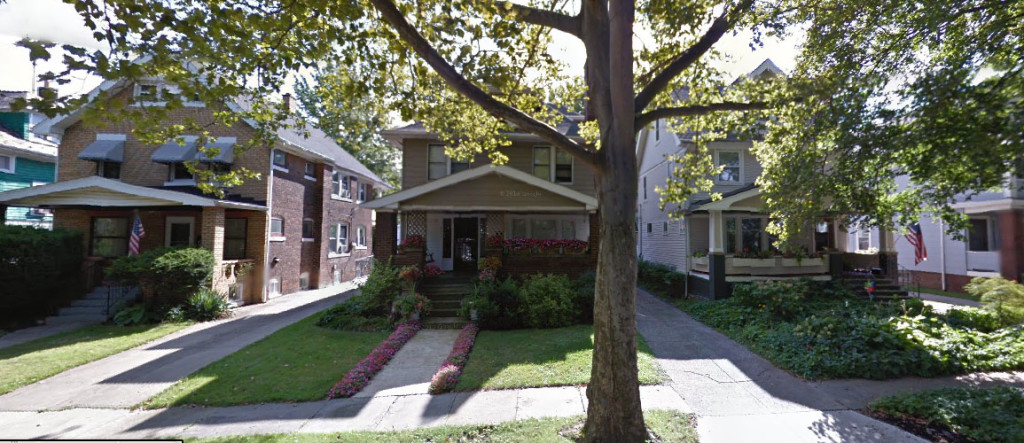
For this year’s April A-Z Challenge I am blogging a series of sketches about the free people formerly enslaved on the Cleage plantations in Athens, Tennessee. Most are not related to me by blood, although our families came off of the same plantations – those of Samuel, Alexander and David Cleage. Click on any image to enlarge.
I didn’t expect to have trouble finding a Cleage with the first name starting with “E” and was surprised to find that Emma Cleage was one of the few.
Emma was born in 1881 in Austin Texas She was part of the first generation of Cleages born after slavery, and the 2nd child of Richard and Adeline (Wasson) Cleage. Richard, born into slavery in 1858, was the son of Charles Cleage, born into slavery about 1840. There was a Richard Cleage lodging with Abraham and Amanada Cleage in Austin in 1880 and that is the only sign of him in Texas. The family returned to Tennessee by 1880 (Richard was enumerated with them also) and lived first in Rhea County and then moved to Chattanooga by 1888, when Emma was 7 years old.
Richard worked as a hosteler, a laborer and in a feed stable to support his family. By 1892 that included 9 children, his wife and himself. Emma and her siblings attended school for 8 months out of the year. Between 1892 and 1900, Richard Cleage died. In the 1900 census both Emma and her mother were working as washer women. The same year, at the age of 20, Emma married Robert Carter. He died before 1910. They had no children. That year we find her still in Chattanooga, now working as a servant.
There is no description of how she looked, but there are descriptions of her 5 brothers in their Draft Registration cards. They were between 5’4″ and 6′ tall, of slim or medium build with light brown skin, black hair and brown eyes. I picture her as being small, slim, with tan complexion, black hair and brown eyes.
By 1912 Emma’s family had joined the First Great African American Migration north. They came looking for more freedom and better jobs. In 1913 Emma had been in Cleveland, Ohio long enough to know and marry Alexander Foster, a painter. This marriage ended in divorce and without children. By 1917 all but one of her siblings had moved to Cleveland, Ohio. Her brother Archie and sister Louise appeared regularly in little society news items in the black press.
The Encyclopedia of Cleveland describes the situation for African Americans this way: “The period from 1915-30 was one of both adversity and progress for black Clevelanders. Industrial demands and a decline in immigration from abroad during World War I created an opportunity for black labor, and hundreds of thousands of black migrants came north after 1916. By 1930 there were 72,000, African Americans in Cleveland. The Central Ave. ghetto consolidated and expanded eastward, as whites moved to outlying sections of the city and rural areas that would later become SUBURBS. Increasing discrimination and violence against blacks kept even middle-class African Americans within the Central-Woodland area. At the same time, discrimination in public accommodations increased. Restaurants overcharged blacks or refused them service; theaters excluded blacks or segregated them in the balcony; amusement parks such as EUCLID BEACH PARK were usually for whites only. Discrimination even began to affect the public schools. The growth of the ghetto had created some segregated schools, but a new policy of allowing white students to transfer out of predominantly black schools increased segregation. In the 1920s and 1930s, school administrators often altered the curriculums of ghetto schools from liberal arts to manual training. “
In 1918 Emma married Jacob E. Reed. She was 39 with no occupation and he was a 64 year old merchant who had been born in Pennsylvania. He had been married once and his wife was dead. He had one son, Scott who was 18. Jacob owned a fish market and his son worked as a salesman in the store. They owned their home free of mortgage in Shaker Heights Cleveland. It is still standing, as pictured below.
On August 9, 1926, Emma Cleage Reed died from kidney failure and hypertension. She was ill from June 20 to August 9. Emma had lived in Cleveland for 14 years. Her husband, Jacob Reed was the informant. She is buried in Woodland Cemetery, an integrated cemetery.
Follow the links to read about Emma’s brother Jerome Cleage and his wife Pearl Holmes Cleage Article about Cleveland.
I used census records, marriage licenses, city directories, newspaper articles and death certificates to find the information in this post.

